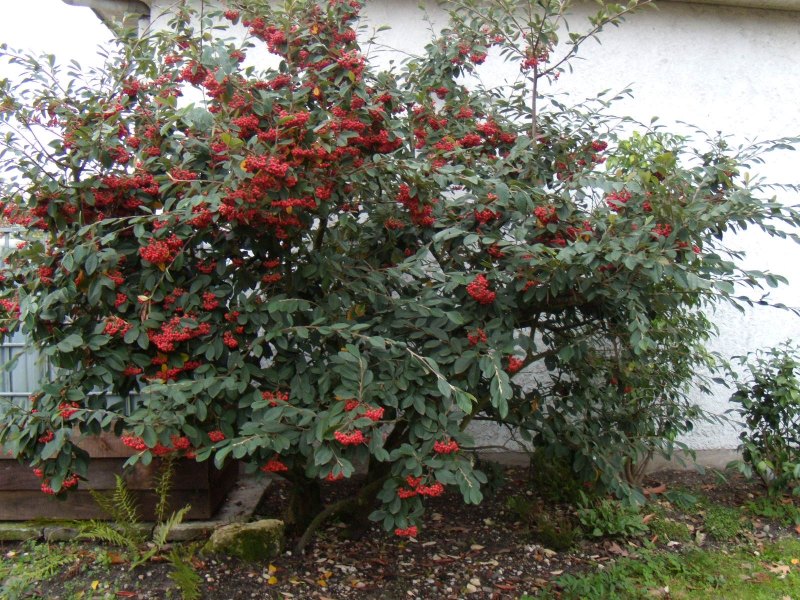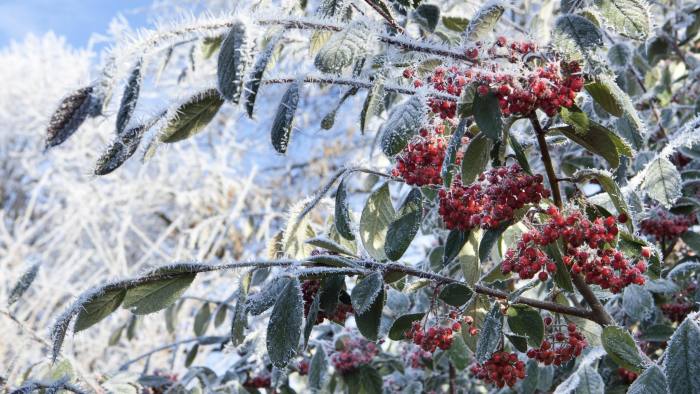One of the best evergreens for a hedge is Cotoneaster lacteus, responding well to knife or secateurs; it is quick growing and keeps its late maturing berries well.
There are several evergreen cotoneasters which are truly winter-fruiting. C. lacteus makes an enormous dense mound in time, 20 feet across; this handsome-leafed shrub has been rapidly increasing in popularity since it was introduced by Forrest in 1913. The very dark green leaves, borne gracefully upon wide-spraying branches, are always well-fruited, and fortunately this handsome bush goes on fruiting freely even when lopped severely to keep it within bounds. Both this species do not reach their full colour until mid-November; C. lacteus’ berries usually vanish by Christmas, when the birds find them ripe. This large shrub is open, rather erect, but still of very graceful growth, and the glossy, rounded leaves, pale beneath, are very elegant on young shoots.
Graham Stuart Thomas

All the best traits of the Cotoneaster genus are instilled in C. lacteus, which is laden with berries from October to March. Reliable in almost any soil, this tough evergreen also makes an ideal hedge in exposed gardens.
Gardeners World Magazine

As a late berrier, Cotoneaster lacteus is also excellent, less harried by birds, who seem to find its fruits bitter or less interesting. It blends its olive-green leaf and red berry most handsomely and I cannot think why it has never been a first choice in Britain since its discovery in Yunnan province. Seed from the first collection produced an amazing hedge, eventually 20ft high in Dublin’s Glasnevin botanic garden.
Robin Lane Fox
